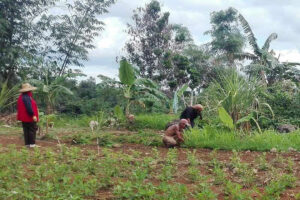Tariff rates should be lowered to help poor Filipinos

(This is the Management Association of the Philippines’ “Position Paper on the Comprehensive Review of the MFN Tariff Structure.”)
In the midst of the ongoing move by the Tariff Commission (TC) and the National Economic and Development Authority (NEDA) to review and reform the tariff structure of the Philippines, the Management Association of the Philippines (MAP) calls on the government to move towards achieving a tariff structure that:
1. Supports food security for Filipinos, especially accessibility and affordability of competitively priced food, via low tariffs on food products;
2. Strengthens sustainable agri-food value chains, especially domestic agricultural value-adding enterprises including processing, storage, and logistics, through a rational tariff structure where tariff rates on inputs do not exceed those on finished products;
3. Is neutral across industries and avoids distortions and unwarranted protection arising from tariff peaks, currently seen primarily in agricultural products; and,
4. Reduces incentives and opportunities for corruption and smuggling by unifying Minimum Access Volume (MAV) and non-MAV tariff rates, and keeping tariffs relatively low and uniform across all goods (with a maximum 10% to 15%) to keep food prices affordable, especially to the poor.
Filipino families have historically been burdened with higher food prices than consumers in other countries across the ASEAN and beyond. The burden is worsened by relatively lower incomes, the bulk of which must be spent on food because food prices are higher than elsewhere. Worse, lower-income families are forced to purchase food products of low nutritional value, leading to a worsening vicious cycle of poverty, hunger and poor nutrition, lowered human capacity, hence persistent and further deepening poverty.
Yet Philippine tariffs on agricultural and food commodities are higher than those applied to goods in general. The TC reports that the simple average of tariffs applied on agricultural products is 12%, while the average for all products is 8%. Trade-weighted averages show the same pattern, with 9% for agriculture, nearly double that for all goods at 5%.
Agricultural tariffs have remained high because these have been generally excluded from tariff adjustments over the past decades, with agricultural products deemed “sensitive” levied the highest statutory rates of up to 65%. In 2015, two-thirds or 66% of Philippine agricultural output by value was shielded from foreign competition by MFN tariffs of 40% or more. The 2018 Philippines Trade Policy Review, jointly undertaken by the Philippine government and the World Trade Organization, showed that the majority of commodities have MFN tariffs ranging from zero to 20%. However, about 6% of lines have tariffs significantly above 20%, reaching up to 65%.
The Trade Policy Review also observed that the tariff peaks translate into a reduced incentive for domestic value adding. For example, high tariffs on corn at 40% dampen incentives to manufacture livestock and aquaculture feeds within the country, which are vital in the meat and fishery industries that provide the protein needs of Filipinos.
This exceptional level of protection has dampened the impetus for government and agricultural producers to achieve higher levels of productivity, hence lower costs and prices, to be comparable to and competitive with that of our neighbors. The long-term and lasting solution to attain food security for Filipinos is to implement game-changing reforms for productivity improvement, such as farm consolidation, better water management, and effective extension systems.
Maintaining high import tariffs will only remove the urgency to pursue these.
Most of the agriculture commodities with very high tariffs are food products (sugar, meat, fish, rice) or inputs to local manufacturing and value addition (corn, meat, fish, sugar, etc.). These commodities are prominent and crucial in family food consumption, food security, and general inflation.*
The Bangko Sentral ng Pilipinas (BSP) reports that on average, food and agricultural items have accounted for 38% of inflation since 2017. The recent and disheartening episodes of inflation on specific food items, such as pork, fish, sugar, garlic, and onions, highlight the disproportionate impact of high tariffs that underlie high domestic food prices.
Trade enhances food security. It improves access to food, lowers food costs, mitigates supply shocks, reduces inflationary pressures, and ultimately strengthens economic and social prosperity. High tariffs have long been shown to be counter-productive, and lead to reduced investment, low or stagnant wages, and higher rates of malnutrition. Using protective trade policy to help farmers causes unwanted collateral damage to the much wider mass of consumers, especially the poor who suffer the long-term consequences of high-priced food.
But the positive economic gains of greater trade must be accompanied by effective implementation of focused adjustment and assistance measures carefully aimed at adversely affected sectors, especially small farmers. Government must refocus its support and assistance to farmers from high levels of trade protection to effective improvement of productivity and competitiveness.
In sum, removal of existing peaks and achieving low uniform rates in a tariff structure that provides equal incentives across domestic industries will encourage more and wider agricultural processing and value-adding, help control inflation, and enhance the country’s food security. We urge the TC and NEDA to move the Philippine economy in this direction.
*Annex A accompanying this position paper can be found here:
Benedicta Du-Baladad is the MAP president. Cielito F. Habito is the governor-in-charge (GIC) of the MAP Cluster on Resilience and Recovery, and the GIC of the MAP Campaign Against Malnutrition and Child Stunting (CAMACS) Team ENCOURAGE.




